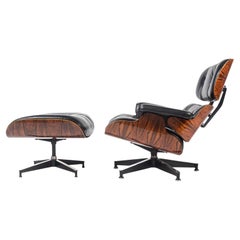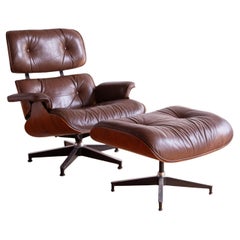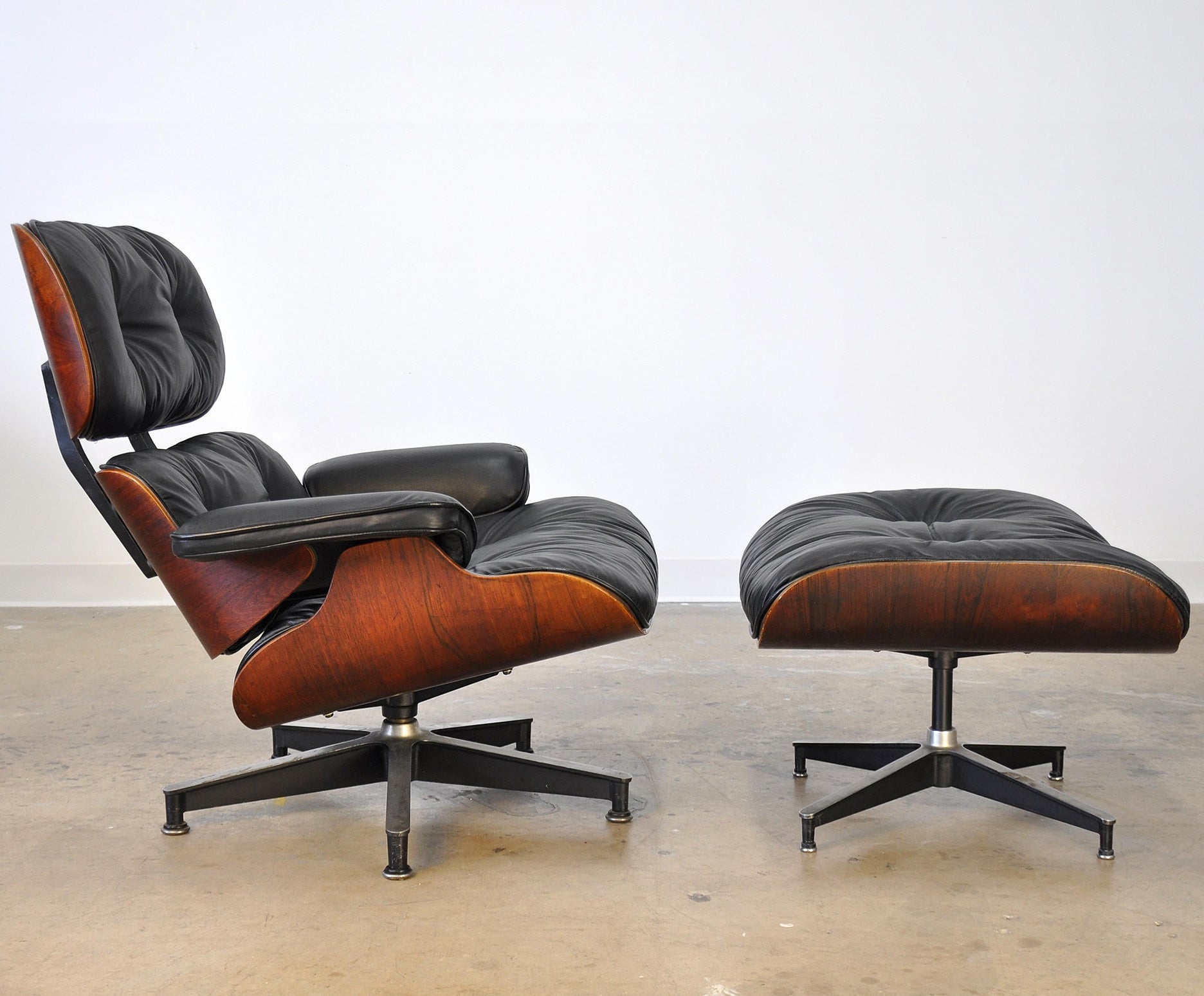
Eames Lounge Chair and OttomanBy Charles and Ray Eames
Long before it was the pièce de résistance in a collector’s office or an upscale bachelor pad — landing in ample design magazines, on television and in well-appointed offices over the years — the Eames lounge chair was a fresh, subversive new take on a classic club chair and a culmination of experimentation by its inventive creators.
Charles and Ray Eames (1907–78; 1912–88) met while studying at the Cranbrook Academy of Art, the prestigious Michigan institution that drew such illustrious design minds as Florence Knoll, Eero Saarinen and more. After graduation, they formed the Eames Office, where they spent much time exploring and formulating new techniques in bent plywood and fiberglass with the goal of producing affordable furniture for a mass market. The Eames lounger, on the other hand — with its signature wood-grain back and sumptuous (usually black) leather seat — was different.
While the couple’s DCW chairs, introduced in the 1940s, prioritized ease of production and affordability of materials, the lounge, which debuted in 1956, was Charles and Ray’s interpretation of luxury furniture. And to the Eameses, luxury meant, above all, comfort. The couple famously called the lounge chair and ottoman “a special refuge from the strains of modern living” and described their design as having the “warm receptive look of a well-used first baseman’s mitt.”
Although the seat makes use of the same bentwood technique the Eameses pioneered using their famous “Kazam! Machine” (a handmade apparatus for molding plywood) for their DCW chairs, it tops off this frame with supple leather over a plump, upholstered shape.
Ever fascinated by ergonomics, the Eameses carefully calibrated the pitch of the seat. It has enough flexibility for comfort but not so much that stability is sacrificed. This precise shape comes by way of three connected plywood pieces, which, on early models were covered in five layers of Brazilian rosewood; owing to an early 1990s-era embargo on the material, however, the Brazilian rosewood has since been replaced with either ash, walnut or palisander. The accompanying ottoman is the icing on the comfort cake, inviting the sitter to quite literally kick back and relax.
Today, imitations of the Eames lounge chair and ottoman abound. The seat is currently manufactured by both Herman Miller and Vitra, and when it was launched initially by the former, the supporting marketing blitz emphasized the chair’s versatility — an effort that, given the seat’s current ubiquitousness, was clearly successful.
Eames Lounge Chair Ottoman
2010s American Mid-Century Modern Lounge Chairs
Aluminum
Vintage 1970s American Mid-Century Modern Swivel Chairs
Leather, Plywood
Mid-20th Century American Mid-Century Modern Lounge Chairs
Rosewood
Mid-20th Century German Mid-Century Modern Lounge Chairs
Metal
Mid-20th Century American Mid-Century Modern Lounge Chairs
Aluminum
Vintage 1960s American Mid-Century Modern Lounge Chairs
Metal
Vintage 1970s European Mid-Century Modern Lounge Chairs
Leather, Wood
20th Century American Mid-Century Modern Chairs
Leather
Mid-20th Century American Mid-Century Modern Lounge Chairs
Aluminum
Mid-20th Century American Mid-Century Modern Lounge Chairs
Aluminum
Vintage 1960s American Mid-Century Modern Lounge Chairs
Leather, Rosewood
Vintage 1950s American Modern Chaise Longues
Leather, Foam, Plywood
Mid-20th Century American Mid-Century Modern Lounge Chairs
Metal
Late 20th Century Central American Mid-Century Modern Lounge Chairs
Leather
Vintage 1970s American Mid-Century Modern Lounge Chairs
Aluminum
Vintage 1970s American Mid-Century Modern Lounge Chairs
Metal
Vintage 1950s American Mid-Century Modern Armchairs
Leather, Wood, Walnut
Vintage 1950s American Mid-Century Modern Lounge Chairs
Aluminum
Vintage 1980s American Mid-Century Modern Lounge Chairs
Leather, Rosewood
Mid-20th Century British Mid-Century Modern Lounge Chairs
Leather, Rosewood
20th Century European Mid-Century Modern Lounge Chairs
Leather, Cherry
Vintage 1960s European Mid-Century Modern Lounge Chairs
Leather, Hardwood
Vintage 1950s Swiss Mid-Century Modern Lounge Chairs
Chrome
Vintage 1960s Danish Mid-Century Modern Lounge Chairs
Leather, Hardwood
20th Century European Mid-Century Modern Armchairs
Leather, Wood
Vintage 1950s American Mid-Century Modern Ottomans and Poufs
Leather, Wood
Vintage 1970s German Lounge Chairs
Leather, Wood
Vintage 1970s Italian Modern Armchairs
Metal
Vintage 1970s Mid-Century Modern Armchairs
Leather, Wood
Vintage 1970s Italian Modern Armchairs
Metal
Early 2000s German Mid-Century Modern Armchairs
Metal
Mid-20th Century German Mid-Century Modern Lounge Chairs
Aluminum
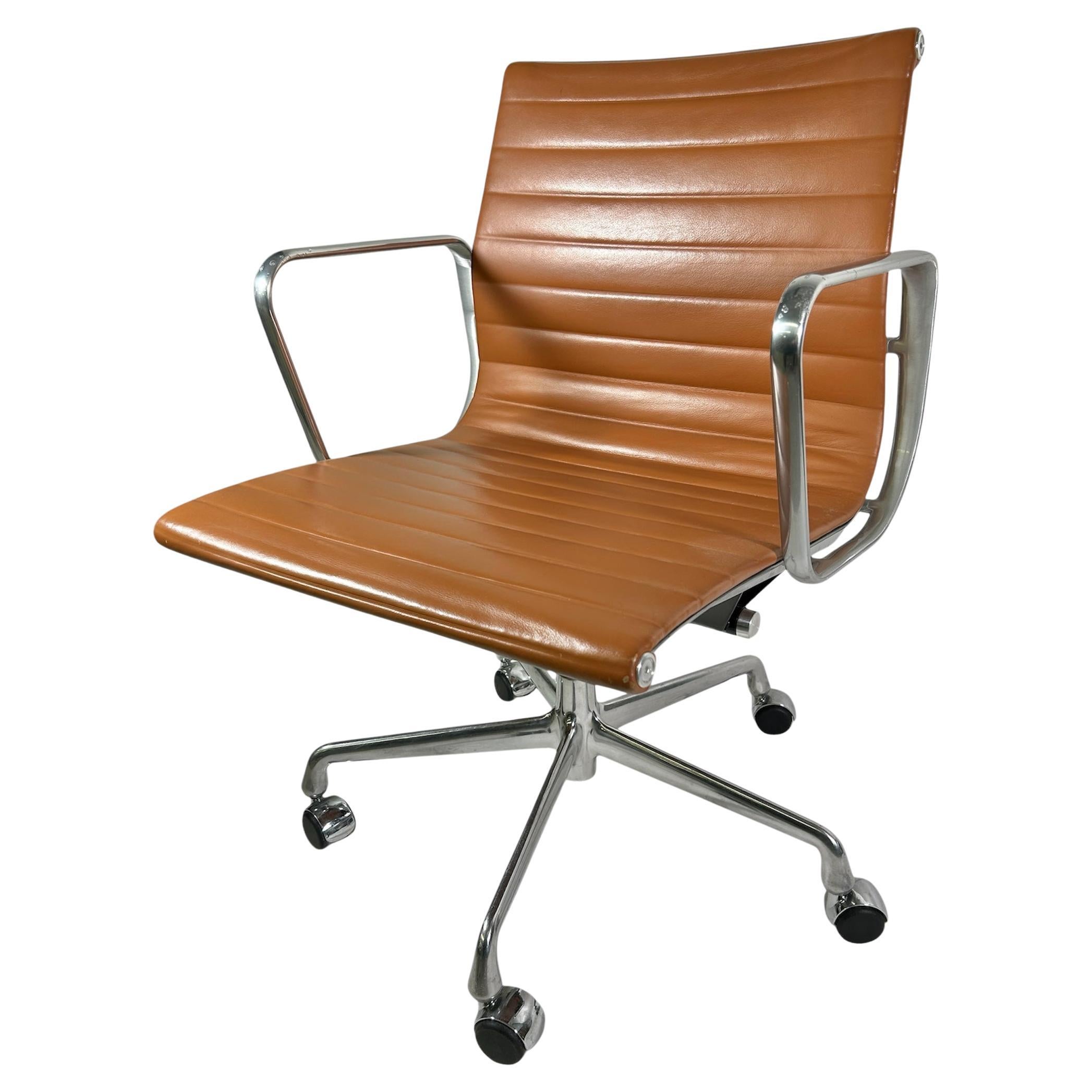
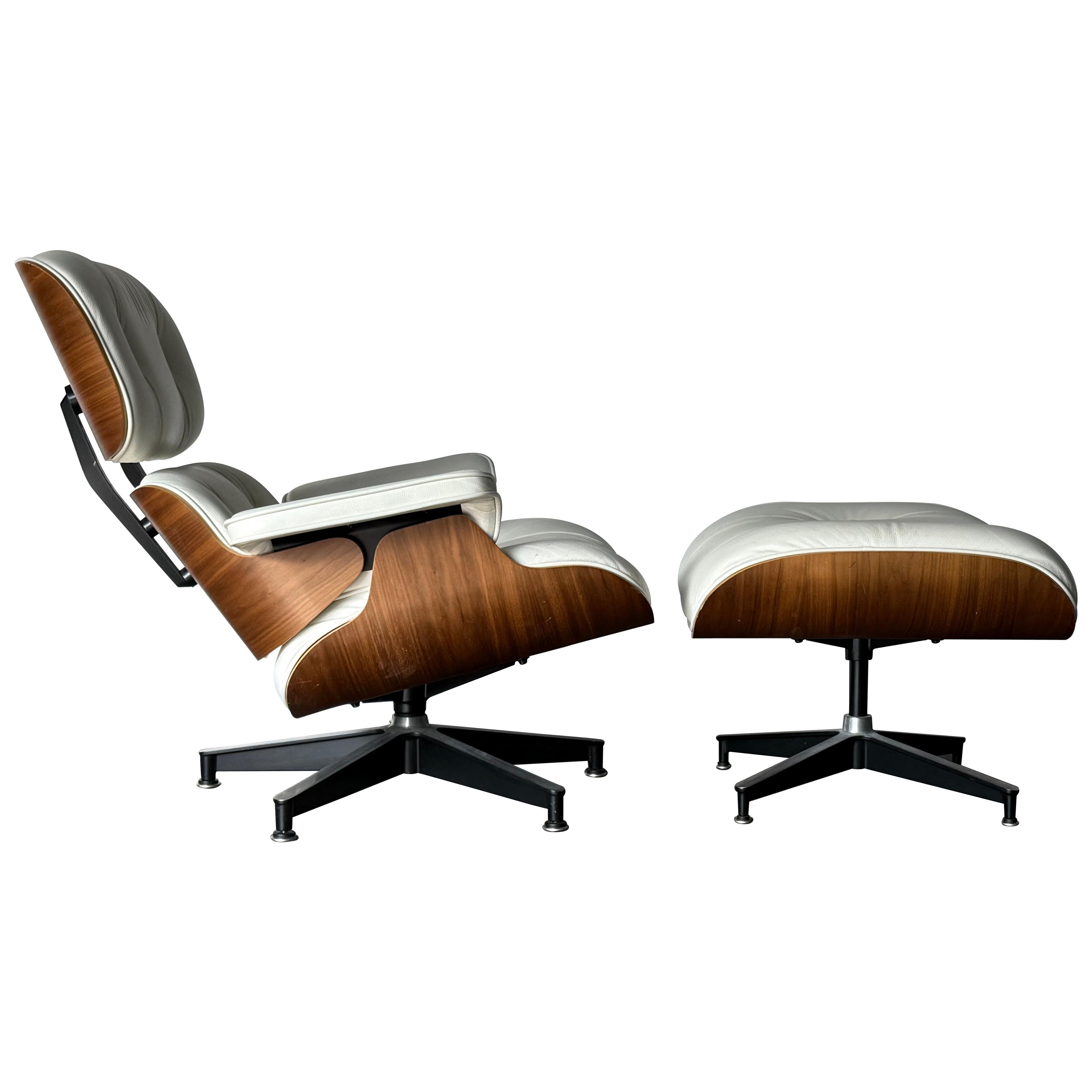
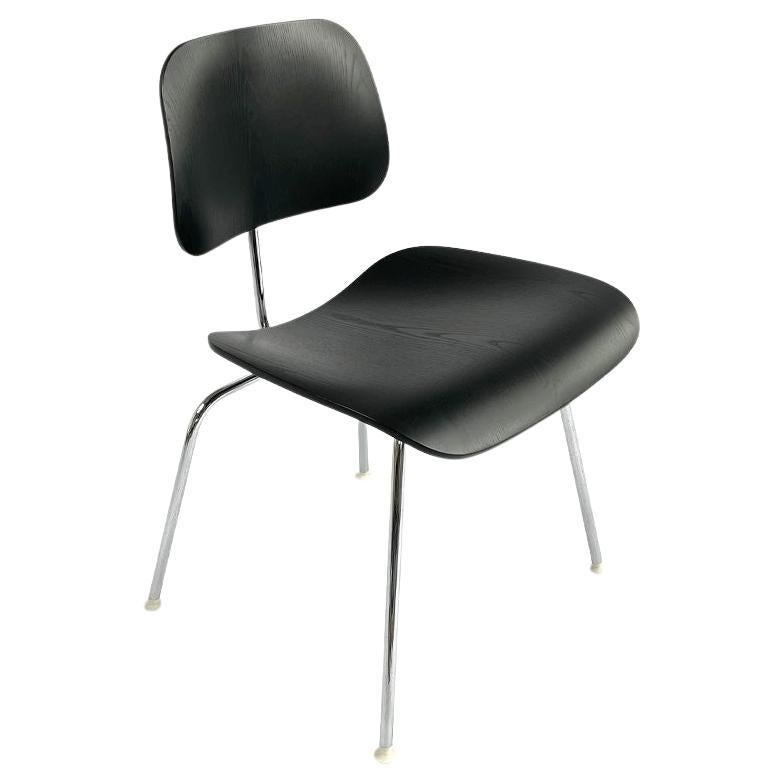
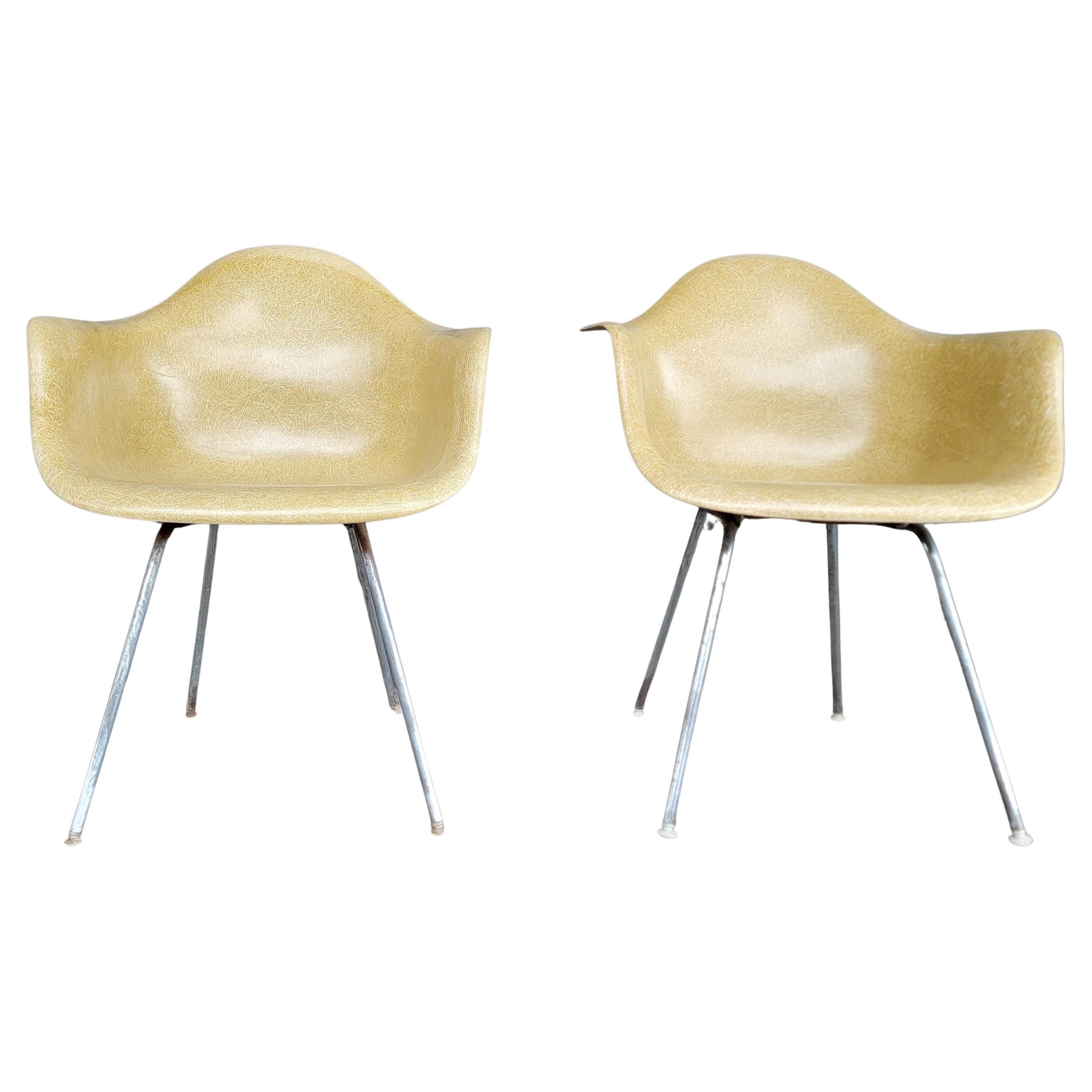
Read More
The 21 Most Popular Mid-Century Modern Chairs
You know the designs, now get the stories about how they came to be.
Iconic Furniture Makes This 1958 Midwestern Home a True Mid-Century Gem
Designer Susan Yeley turned to 1stDibs to outfit an Indiana home with standout pieces that complement its modernist style.
A Guide to Herman Miller’s Most Iconic Furniture
The prolific manufacturer has partnered with many of the world’s top designers since opening its doors in 1923. Here are some of the company’s greatest hits, which helped transform the American home and office.
Jessica Schuster Reveals How a Millennial Designer Can Muster Any Style
Instead of adhering to one era or aesthetic, the New Yorker prefers to create singular spaces that include new, vintage and custom pieces, plus plenty of art.

